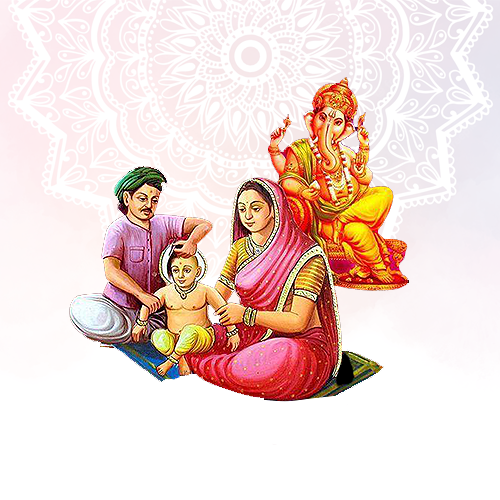
Mundan
Mundan Pooja, also known as the Mundan ceremony or Chudakarana, is a traditional Hindu ritual that involves the first haircut of a child, usually a boy. This rite of passage is performed to purify the child and promote their well-being. It holds significant cultural and spiritual importance in Hinduism.
Why Mundan Pooja?
-
Purpose:
- Purification: It is believed that shaving the head helps to purify the child by removing any negative energies or impurities accumulated since birth.
- Health Benefits: It is also thought that the Mundan ceremony promotes healthy hair growth and strengthens the hair follicles.
-
Significance:
- The ritual symbolizes the child's transition from infancy to childhood.
- It is considered an auspicious event, inviting blessings and protection from deities for the child’s future.
-
Age for Mundan:
- The ceremony is typically performed when the child is between one to three years old. However, the specific timing can vary based on family traditions and astrological considerations.
-
Ritual Process:
- Choosing an Auspicious Date: A priest or astrologer usually determines a favorable date for the ceremony based on the child’s horoscope.
- Preparation: The family prepares by cleaning the house, decorating the space, and gathering the necessary ritual items like a razor, turmeric paste, holy water, flowers, and sweets.
- Ceremony:
- The child is bathed and dressed in new clothes.
- A puja (worship) is performed to invoke blessings from deities, particularly Ganesha, who is the remover of obstacles.
- The priest or an elder family member shaves the child's head, leaving a small tuft of hair called "shikha" at the crown of the head (optional based on regional practices).
- The shaved hair is usually offered to a holy river or buried in a clean place.
- Post-Ceremony Rituals: The child is given another bath, and turmeric paste is applied to the scalp to soothe the skin and promote healing. A feast or celebration often follows, where family and friends gather to bless the child.
-
Regional Variations:
- Different regions in India have unique customs and traditions associated with the Mundan ceremony. For example, in some South Indian communities, the ceremony might be conducted in a temple, while in North India, it might be performed at home or a holy site.
-
Spiritual and Cultural Importance:
- The Mundan ceremony reinforces the importance of cultural heritage and family traditions.
- It is a joyous occasion that strengthens familial bonds and community ties.
- The ritual is seen as an act of devotion and gratitude to the divine for the child's well-being.
Mundan Pooja is a significant Hindu rite of passage that combines spiritual, cultural, and practical elements. It reflects the community's values and traditions, emphasizing the importance of purification, health, and divine blessings in a child's life.
 Add Temple
Add Temple